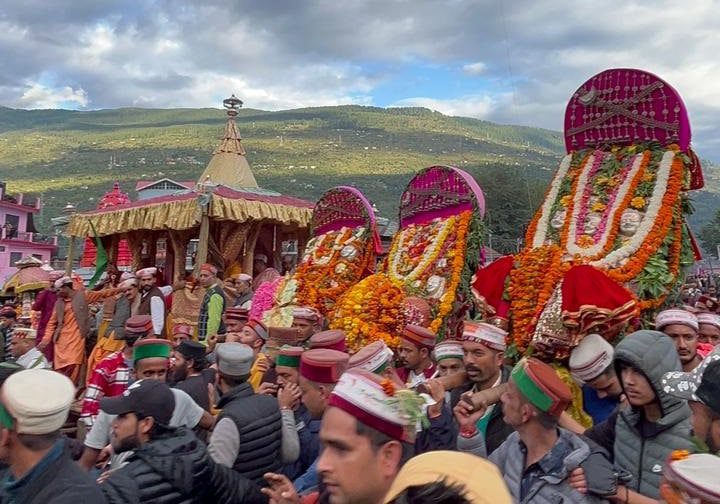Kullu Dussehra is a world-renowned festival celebrated in the Kullu Valley of Himachal Pradesh, attracting hundreds of thousands of visitors each year. Unlike Dussehra elsewhere in India, which ends on Vijay Dashmi, Kullu Dussehra begins on that day and continues for a week, featuring vibrant processions, folk dances, and a grand assembly of local deities.
Origins and Historical Background: the festival dates back to the 17th century during the reign of Raja Jagat Singh (1637–1662). According to legend, the king was cursed after a tragic incident involving a Brahmin named Durgadutt. Seeking relief from his mysterious illness, Raja Jagat Singh consulted spiritual advisors, who told him that only by bringing the idol of Lord Raghunath (Lord Ram) from Ayodhya to Kullu could the curse be lifted.
How the Idol Was Brought from Ayodhya: raja Jagat Singh entrusted this sacred mission to a Brahmin named Damodar Das. After serving at the Tretanath temple in Ayodhya for a year, Damodar Das managed to obtain the thumb-sized golden idols of Lord Raghunath and Sita. As he journeyed back, the people of Ayodhya tried to reclaim the idol, but legend says the idol became impossibly heavy when moved toward Ayodhya and light when carried toward Kullu—a sign of divine will.
The idols were first kept at Manikaran and then moved to Sultanpur (Kullu), where a temple was built in 1660. Raja Jagat Singh placed the idol on his throne, declared himself a servant of Lord Raghunath, and made the deity the sovereign ruler of Kullu. This act marked the beginning of Kullu Dussehra, with all local deities invited to pay homage to Lord Raghunath.
Since then, Kullu Dussehra has been celebrated with a grand procession of Lord Raghunath’s chariot and the gathering of over 300 village deities, making it a unique and inclusive festival. The tradition continues, with the descendants of Raja Jagat Singh still playing a ceremonial role in the festivities.
Kullu Dussehra is not just a festival but a living heritage that blends devotion, legend, and vibrant local culture, all centered around the journey of Lord Ram’s idol from Ayodhya to the heart of the Himalayas.

0 Comment